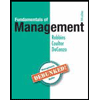The Human Resources Manager received a call from a supervisor who had just completed a firing meeting. The supervisor said that at the time the employee was notified of the termination, which was prompted by six no-show, no-call incidents over a five-week period, the employee became visibly angry and said, “You can’t fire me! You sure as hell can be terminated, though!” The supervisor had told the employee to calm down and offered that “we all say things we don’t mean.” The employee did appear to calm down, but stood and said, “You’re taking away the only thing I have left. And I’ll see you tomorrow morning at your house and then you’ll know what it’s like.” The supervisor was very afraid. She asked the Human Resources Manager what to do. The Human Resources Manager immediately contacted the company threat management team, which consisted only of herself, the Operations Vice President, and President. They interviewed the supervisor and a number of other workers. They learned the following: • The supervisor had talked several times with the employee about the attendance situation. The employee was a 40-year-old former school teacher who at first was apologetic about missing his shifts, but became increasingly sullen at each subsequent counseling. His hygiene and appearance had begun to suffer, and it was rumored that he was living in his car. There had also been a few complaints about him being extremely abrupt with visitors whom he was supposed to serve. • When given a last-chance warning letter, the employee had merely crumpled the paper and left it on the supervisor’s desk before walking out and slamming the door. • The supervisor noted that she believed that the employee’s wife had recently left and taken their three children to the Mainland. The employee was himself from the Mainland, but no one really knew exactly where. • He had mentioned to an employee recently that he wondered what the last thing had been on the mind of someone who had committed Suicide. • The supervisor lived about five miles away from the last known residence of the employee. She was married and had two small children. A year ago she had hosted a party at her home for her employees and the fired employee had spent much of the evening playing with her children. • The supervisor said that a week earlier there had been a story on the national news about a triple murder at a workplace on the mainland which had ended with the gunman, a former worker, being shot and killed by the police. The supervisor said that the fired employee had commented that this was probably a pretty good way to go and had said, “I hope that doesn’t hurt too bad.” Another employee, reporting about the same situation, said that the fired coworker had noted that he could see how somebody could get so fed up with his boss that he would “come back with a gun.” He had ended the conversation by saying that he had always wanted a quick death himself, “like from a police sniper.” • Another employee reported receiving a call from the fired employee in which he was told to stay home tomorrow and that he could keep the binoculars loaned to him by the fired employee. In the same call, the fired employee appeared at times incoherent but did mention that the recent divorce had forced him to lose his home. He also said that without his job he would not be able to make his child support payments and he knew his wife would retaliate by preventing their children from visiting him during their next school break. The call ended with the fired employee asking his friend to tell his kids that he had always tried his best. • The company called the police and was told by the responding officers that the circumstances did not yet amount to a crime and at this point there was little that could be done. The police did confirm that the employee had purchased a shotgun one week earlier. Questions : 1. Would you do to manage this kind of situation, or would the prevailing attitude have been that the employee was simply “blowing off steam” and the organization should simply “wait and see?”
The Human Resources Manager received a call from a supervisor who had just completed a firing meeting. The supervisor said that at the time the employee was notified of the termination, which was prompted by six no-show, no-call incidents over a five-week period, the employee became visibly angry and said, “You can’t fire me! You sure as hell can be terminated, though!” The supervisor had told the employee to calm down and offered that “we all say things we don’t mean.” The employee did appear to calm down, but stood and said, “You’re taking away the only thing I have left. And I’ll see you tomorrow morning at your house and then you’ll know what it’s like.” The supervisor was very afraid. She asked the Human Resources Manager what to do. The Human Resources Manager immediately contacted the company threat management team, which consisted only of herself, the Operations Vice President, and President. They interviewed the supervisor and a number of other workers. They learned the following: • The supervisor had talked several times with the employee about the attendance situation. The employee was a 40-year-old former school teacher who at first was apologetic about missing his shifts, but became increasingly sullen at each subsequent counseling. His hygiene and appearance had begun to suffer, and it was rumored that he was living in his car. There had also been a few complaints about him being extremely abrupt with visitors whom he was supposed to serve. • When given a last-chance warning letter, the employee had merely crumpled the paper and left it on the supervisor’s desk before walking out and slamming the door. • The supervisor noted that she believed that the employee’s wife had recently left and taken their three children to the Mainland. The employee was himself from the Mainland, but no one really knew exactly where. • He had mentioned to an employee recently that he wondered what the last thing had been on the mind of someone who had committed Suicide. • The supervisor lived about five miles away from the last known residence of the employee. She was married and had two small children. A year ago she had hosted a party at her home for her employees and the fired employee had spent much of the evening playing with her children. • The supervisor said that a week earlier there had been a story on the national news about a triple murder at a workplace on the mainland which had ended with the gunman, a former worker, being shot and killed by the police. The supervisor said that the fired employee had commented that this was probably a pretty good way to go and had said, “I hope that doesn’t hurt too bad.” Another employee, reporting about the same situation, said that the fired coworker had noted that he could see how somebody could get so fed up with his boss that he would “come back with a gun.” He had ended the conversation by saying that he had always wanted a quick death himself, “like from a police sniper.” • Another employee reported receiving a call from the fired employee in which he was told to stay home tomorrow and that he could keep the binoculars loaned to him by the fired employee. In the same call, the fired employee appeared at times incoherent but did mention that the recent divorce had forced him to lose his home. He also said that without his job he would not be able to make his child support payments and he knew his wife would retaliate by preventing their children from visiting him during their next school break. The call ended with the fired employee asking his friend to tell his kids that he had always tried his best. • The company called the police and was told by the responding officers that the circumstances did not yet amount to a crime and at this point there was little that could be done. The police did confirm that the employee had purchased a shotgun one week earlier. Questions : 1. Would you do to manage this kind of situation, or would the prevailing attitude have been that the employee was simply “blowing off steam” and the organization should simply “wait and see?”
Chapter1: Taking Risks And Making Profits Within The Dynamic Business Environment
Section: Chapter Questions
Problem 1CE
Related questions
Question
The Human Resources Manager received a call from a supervisor who had just completed a firing meeting. The supervisor said that at the time the employee was notified of the termination, which was prompted by six no-show, no-call incidents over a five-week period, the employee became visibly angry and said, “You can’t fire me! You sure as hell can be terminated, though!” The supervisor had told the employee to calm down and offered that “we all say things we don’t mean.” The employee did appear to calm down, but stood and said, “You’re taking away the only thing I have left. And I’ll see you tomorrow morning at your house and then you’ll know what it’s like.”
The supervisor was very afraid. She asked the Human Resources Manager what to do.
The Human Resources Manager immediately contacted the company threat management team, which consisted only of herself, the Operations Vice President, and President.
They interviewed the supervisor and a number of other workers. They learned the following:
• The supervisor had talked several times with the employee about the attendance situation. The employee was a 40-year-old former school teacher who at first was apologetic about missing his shifts, but became increasingly sullen at each subsequent counseling. His hygiene and appearance had begun to suffer, and it was rumored that he was living in his car. There had also been a few complaints about him being extremely abrupt with visitors whom he was supposed to serve.
• When given a last-chance warning letter, the employee had merely crumpled the paper and left it on the supervisor’s desk before walking out and slamming the door.
• The supervisor noted that she believed that the employee’s wife had recently left and taken their three children to the Mainland. The employee was himself from the Mainland, but no one really knew exactly where.
• He had mentioned to an employee recently that he wondered what the last thing had been on the mind of someone who had committed Suicide.
• The supervisor lived about five miles away from the last known residence of the employee. She was married and had two small children. A year ago she had hosted a party at her home for her employees and the fired employee had spent much of the evening playing with her children.
• The supervisor said that a week earlier there had been a story on the
national news about a triple murder at a workplace on the mainland which had ended with the gunman, a former worker, being shot and killed by the police. The supervisor said that the fired employee had
commented that this was probably a pretty good way to go and had said, “I hope that doesn’t hurt too bad.” Another employee, reporting about the same situation, said that the fired coworker had noted that he could see how somebody could get so fed up with his boss that he would “come back with a gun.” He had ended the conversation by saying that he had always wanted a quick death himself, “like from a police sniper.”
• Another employee reported receiving a call from the fired employee in which he was told to stay home tomorrow and that he could keep the binoculars loaned to him by the fired employee. In the same call, the fired employee appeared at times incoherent but did mention that the recent divorce had forced him to lose his home. He also said that without his job he would not be able to make his child support payments and he knew his wife would retaliate by preventing their children from visiting him during their next school break. The call ended with the fired employee asking his friend to tell his kids that he had always tried his best.
• The company called the police and was told by the responding officers that the circumstances did not yet amount to a crime and at this point there was little that could be done. The police did confirm that the employee had purchased a shotgun one week earlier.
Questions :
1. Would you do to manage this kind of situation, or would the prevailing attitude have been that the employee was simply “blowing off steam” and the organization should simply “wait and see?”
Expert Solution
This question has been solved!
Explore an expertly crafted, step-by-step solution for a thorough understanding of key concepts.
This is a popular solution!
Trending now
This is a popular solution!
Step by step
Solved in 2 steps

Recommended textbooks for you

Understanding Business
Management
ISBN:
9781259929434
Author:
William Nickels
Publisher:
McGraw-Hill Education

Management (14th Edition)
Management
ISBN:
9780134527604
Author:
Stephen P. Robbins, Mary A. Coulter
Publisher:
PEARSON

Spreadsheet Modeling & Decision Analysis: A Pract…
Management
ISBN:
9781305947412
Author:
Cliff Ragsdale
Publisher:
Cengage Learning

Understanding Business
Management
ISBN:
9781259929434
Author:
William Nickels
Publisher:
McGraw-Hill Education

Management (14th Edition)
Management
ISBN:
9780134527604
Author:
Stephen P. Robbins, Mary A. Coulter
Publisher:
PEARSON

Spreadsheet Modeling & Decision Analysis: A Pract…
Management
ISBN:
9781305947412
Author:
Cliff Ragsdale
Publisher:
Cengage Learning

Management Information Systems: Managing The Digi…
Management
ISBN:
9780135191798
Author:
Kenneth C. Laudon, Jane P. Laudon
Publisher:
PEARSON

Business Essentials (12th Edition) (What's New in…
Management
ISBN:
9780134728391
Author:
Ronald J. Ebert, Ricky W. Griffin
Publisher:
PEARSON

Fundamentals of Management (10th Edition)
Management
ISBN:
9780134237473
Author:
Stephen P. Robbins, Mary A. Coulter, David A. De Cenzo
Publisher:
PEARSON